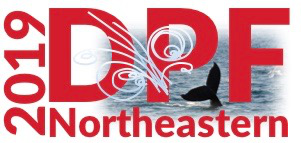Speaker
Description
Xueying Lu, Julian Picard, Michael Shapiro, Ivan Mastovsky, Richard Temkin
Massachusetts Institute of Technology, Cambridge, MA 02139
Manoel Conde, John Power, Jiahang Shao, Maomao Peng, Eric Wisniewski, Scott Doran
Argonne National Laboratory, Lemont, IL 60459
Chunguang Jing
Euclid Techlabs LLC, Solon, Ohio 44139, USA
In this talk, we present experiments on metallic metamaterial structures for high-gradient wakefield acceleration.
High energy particle accelerators at the TeV scale are crucial to the next big discovery in particle physics. Structure-based wakefield acceleration (SWFA) is a promising approach to make compact high-energy particle colliders by achieving higher accelerating gradient compared to conventional RF accelerators. In the SWFA regime, a drive bunch travels through an RF structure and transfers its beam energy into an intense wakefield with a short pulse length; then a trailing witness bunch can be accelerated if positioned at the correct phase in the wakefield.
The metamaterial structure we designed for SWFA is a “wagon wheel” periodic structure at X-band, which supports a fundamental transverse magnetic mode with a negative group velocity leading to reversed-Cherenkov radiation. The period of the structure, 2 mm, is much smaller than the wavelength at X-band. In this way, the metamaterial structure performs almost as a continuous medium with the novel feature of double negative permittivity and permeability. The metamaterial approach provides large room for improvements of the structure performance.
Two “wagon wheel” structures have been tested so far at the Argonne Wakefield Accelerator (AWA). The first structure is 8 cm long with 40 periods. Single 45 nC electron bunches of 65 MeV traversing the structure generated up to 25 MW in 2 ns pulses at 11.4 GHz, in excellent agreement with theory. Two bunches of 85 nC with appropriate temporal spacing generated up to 80 MW by coherent wakefield superposition, the highest rf power that metamaterial structures ever experienced without damage. The reversed-Cherenkov radiation was also clearly verified in the experiment.
A second structure of the same wagon wheel design with 100 periods at 11.7 GHz has been recently tested using trains of up to 8 bunches, with 25 nC per bunch and a bunch rep rate of 1.3 GHz. Preliminary analysis indicates an output power level of about 200 MW at 11.7 GHz in a 4 ns (FWHM) pulse.
These results demonstrate the unique features of metamaterial structures that are very attractive for future high-gradient wakefield accelerators, including two-beam and collinear accelerators. Advantages include the high shunt impedance for high-power generation and high-gradient acceleration, the simple and rugged structure, and a large parameter space for optimization.
